This De Bethune Watch May Be The Most Spectacularly Blue Timepiece Ever Made
The $315,000 “Kind of Blue” Tourbillon Sapphire’s titanium components were heated past 1,292 degrees to achieve its heavenly hue.
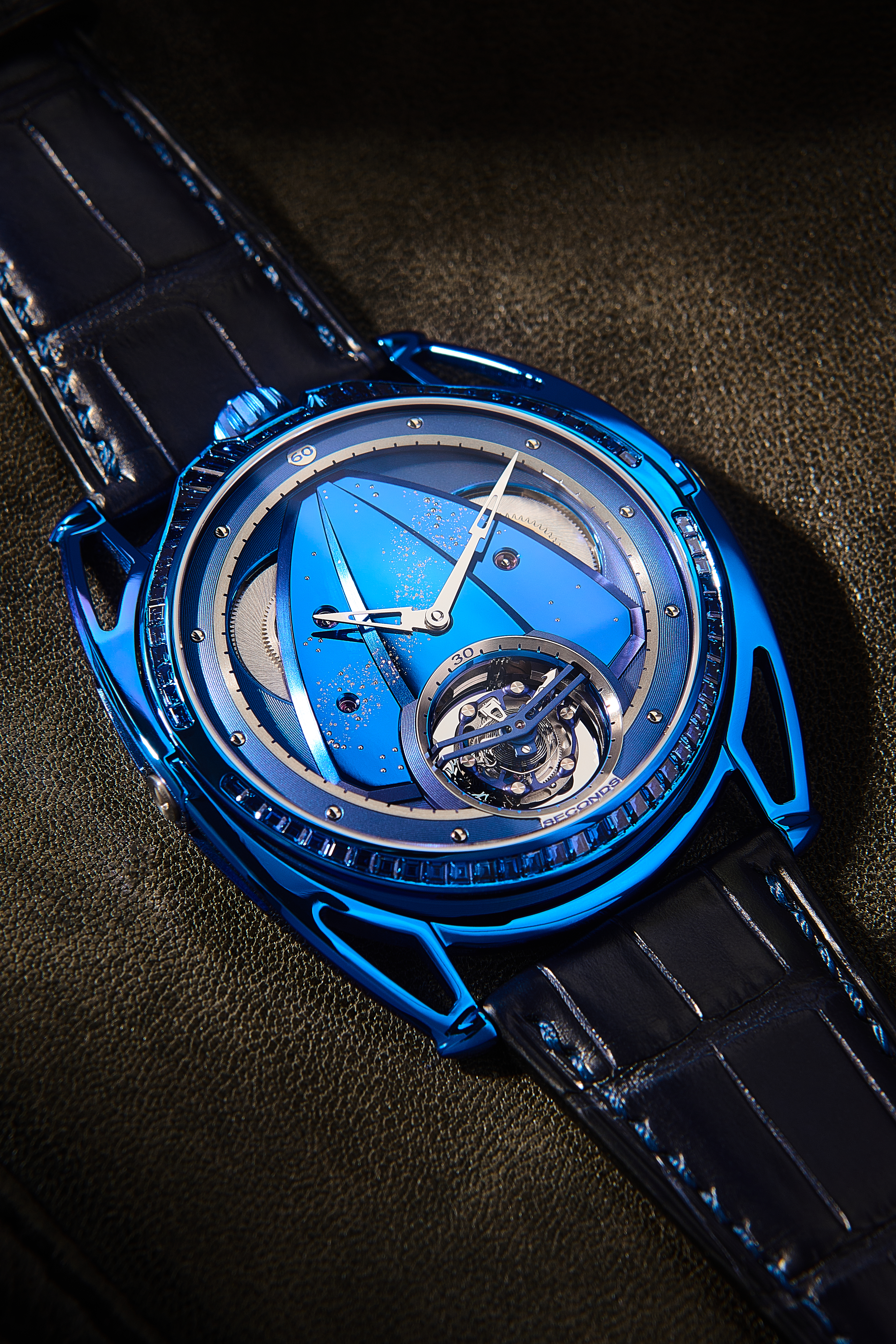
When Swiss luxury watchmaker De Bethune recently released the DB28XP Kind of Blue Tourbillon Sapphire, the name may have caused confusion in some quarters.
The $315,000 wristwatch could very well be the most spectacularly blue timepiece ever devised; in De Bethune’s nomenclature, Kind of Blue references the almost miraculous metallurgic coloring technique developed by brand founder and master watchmaker Denis Flageollet.
While experimenting with balance wheel treatment, Flageollet inadvertently discovered that titanium heated past a scorching 700 degrees Celsius (1,292 degrees Fahrenheit) will turn a brilliant blue color—one that’s now a hallmark of De Bethune’s design language.
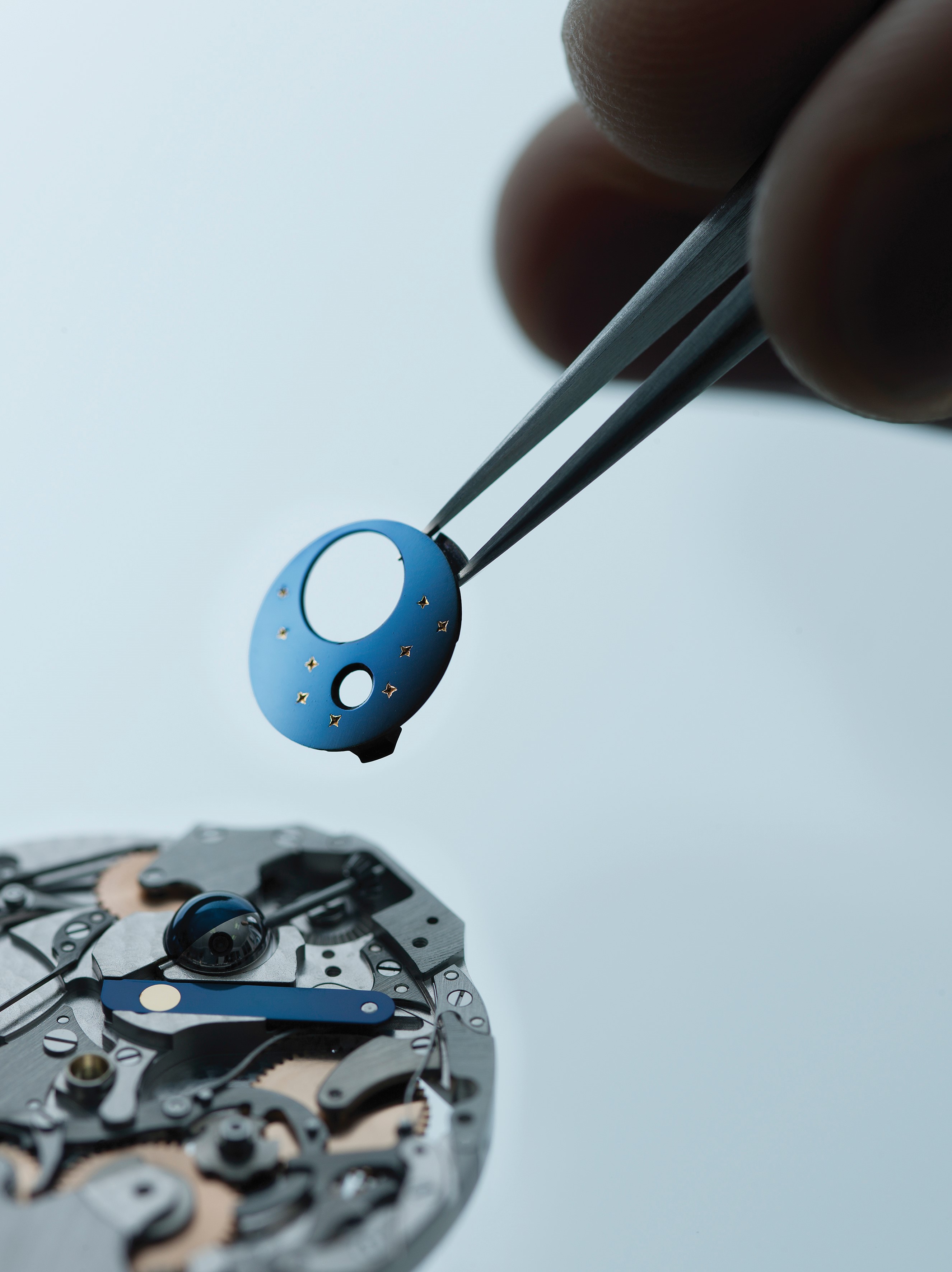
But “Kind of Blue” is best known as the title of jazz trumpeter Miles Davis’ seminal fifth record from 1959, regarded by many as the genre’s most important release ever. Some may hear simplicity in Davis & co.’s classic tune, not realizing that the brilliance is in how each musician makes mode-shifting improvisations sound simple. Such a feat is only accomplished by a risk-taking artist who possesses a mastery of their field’s fundamentals.
Flageollet was obviously referencing Davis’ “Kind of Blue” in naming his collection of watches featuring the heat-achieved hue, and in his work, others have specifically noted the concept of virtuosic artistry born of fundamental mastery.
In Assouline’s description of the De Bethune: The Art of Watchmaking book released to coincide with De Bethune’s 20th anniversary in 2022, the luxury publishing house noted that, “In just 20 years, the company has unveiled 30 in-house movements in the most surprising way, by emphasizing mechanical simplicity and concentrating on the fundamentals of traditional watchmaking.”
“Following this principle, De Bethune has built a collection of pieces with extendable designs capable of evolving over time through innovation and the brand’s research into emerging materials.”
Wei Koh, founder of watch-centric magazine “Revolution,” expresses a similar sentiment in the opening of Seeking Perfect – The Art of Watchmaking, a documentary showing Flageollet’s process of forging a piece of iron ore into a steel watch case while chronicling the history and ethos behind De Bethune.
“He is pursuing chronometry as an art form,” Koh says. “He’s taking chronometry, or the pursuit of accuracy in a watch, but has expressed it in a way that’s so beautiful, so singular, and so unique that it takes your breath away.”
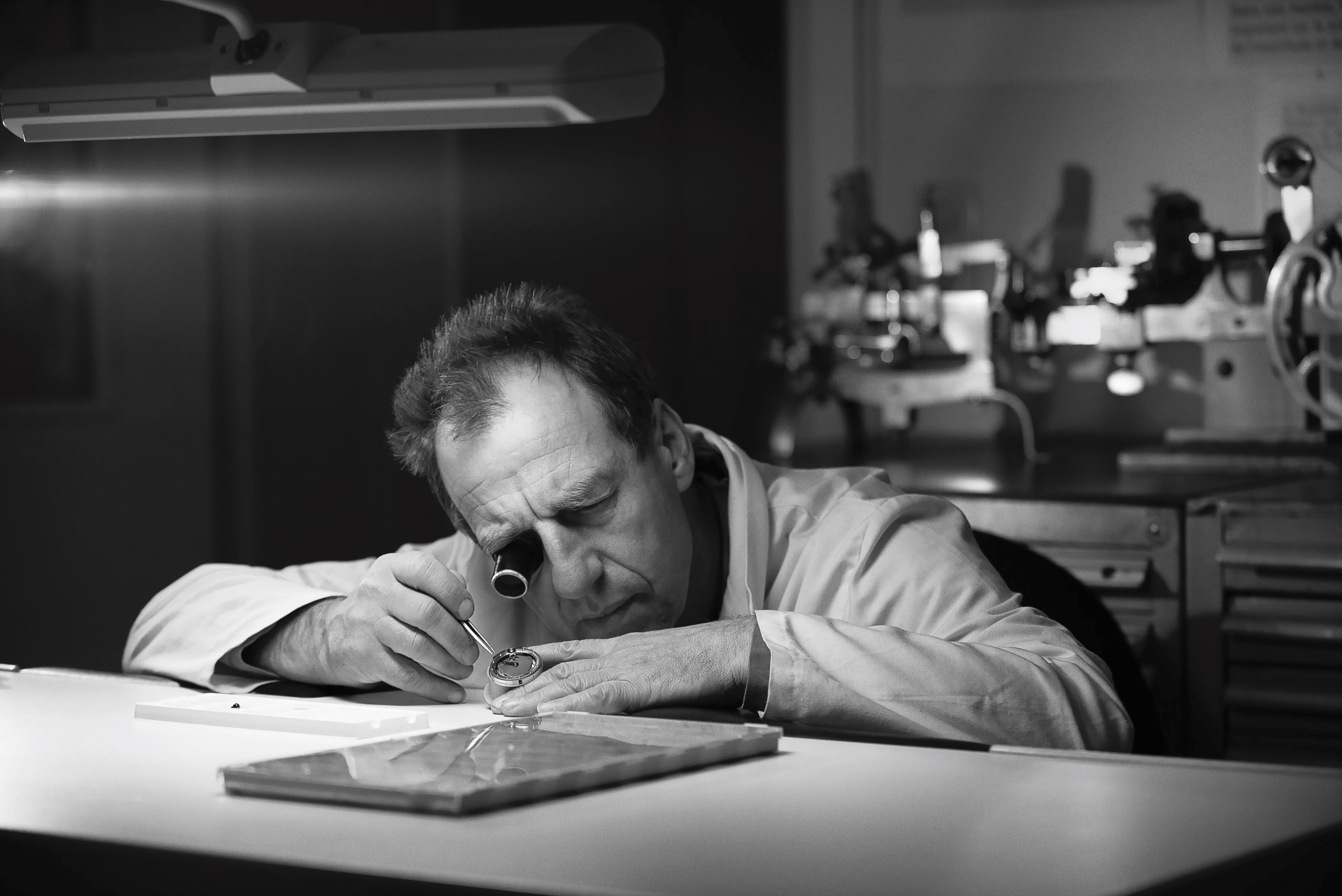
If you subscribe to the concept of predetermination, then it’s safe to say Flageollet was destined to become a great watchmaker. He’s the son, grandson, and great-grandson of watchmakers, and he studied watchmaking and micro-engineering in college before joining Switzerland’s Museum of Fine Arts Le Locle as a technician in antique watchmaking. His expertise is undeniable, and the source of his artistic inspiration, though less obvious, is revealed in the documentary.
“I come from the Vosges, in the west of France. It’s a small mountain range, so I’ve always been really close to nature,” Flageollet says while chopping firewood with an ax in one hand and a vintage woodworker’s pickaroon in the other.
“Nature can inspire you. Here, for example, this little leaf. It makes you think immediately of a De Bethune bridge…. Wood, in fact, is like metal. It has fibers in it, it’s alive. And in fact, we think of metal as inert, but it’s also alive. Especially ancient metals.”
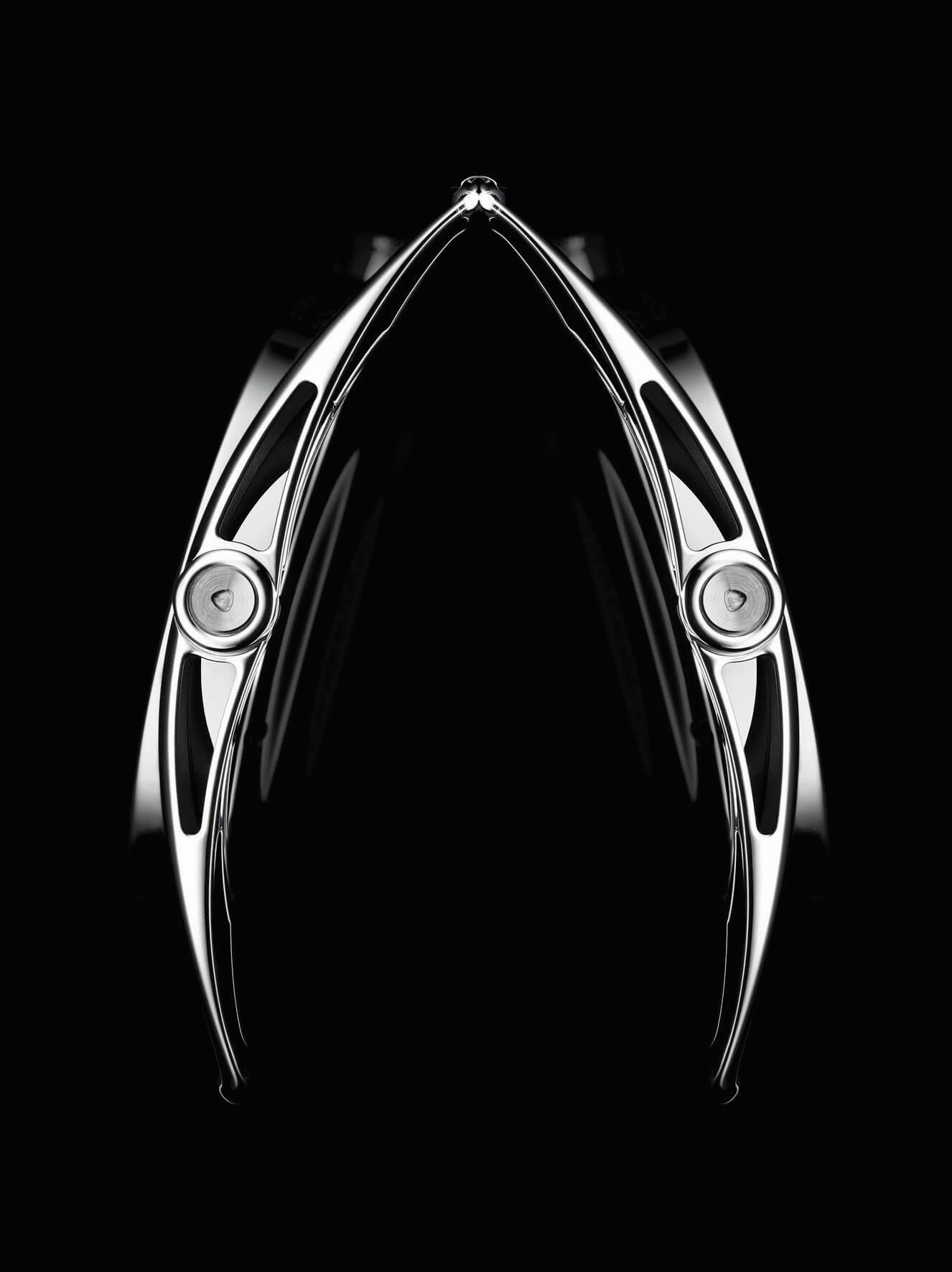
Flageollet’s affinity for nature no doubt informed the location of De Bethune headquarters in L’Auberson, a quaint village in the Swiss Jura mountains. There, he and Pierre Jacques, who previously served as a director of the Grand Prix d’Horlogerie before joining De Bethune as CEO in 2011, work with a team of nearly 60 watchmakers, engineers, designers, micro-mechanics, polishers and decorators to develop and manufacture every timepiece in-house.
In its 22 years, De Bethune has developed more than 30 calibers, registered numerous patents, and attracted an impressive celebrity clientele that includes Michael Jordan and Alicia Keys. Perhaps most proudly, the original De Bethune DB28 won the Aiguille d’Or at the 2011 Grand Prix d’Horlogerie de Genève—watchmaking’s equivalent of a Best Picture Academy Award.
The DB28XP Kind of Blue Tourbillon Sapphire is the latest DB28 evolution. Like the original, it features an open dial revealing the manually-wound caliber, a spherical moonphase at 6 o’clock, and De Bethune’s patented floating lugs.
It borrows its ultra-thin 9.1mm thickness from the DB28XP, which was released on the DB28’s 10th anniversary in 2020. A true engineering marvel, the titanium and silicon tourbillon is equipped with the lightest cage ever created (.18 grams), which completes a rotation every 30 seconds.
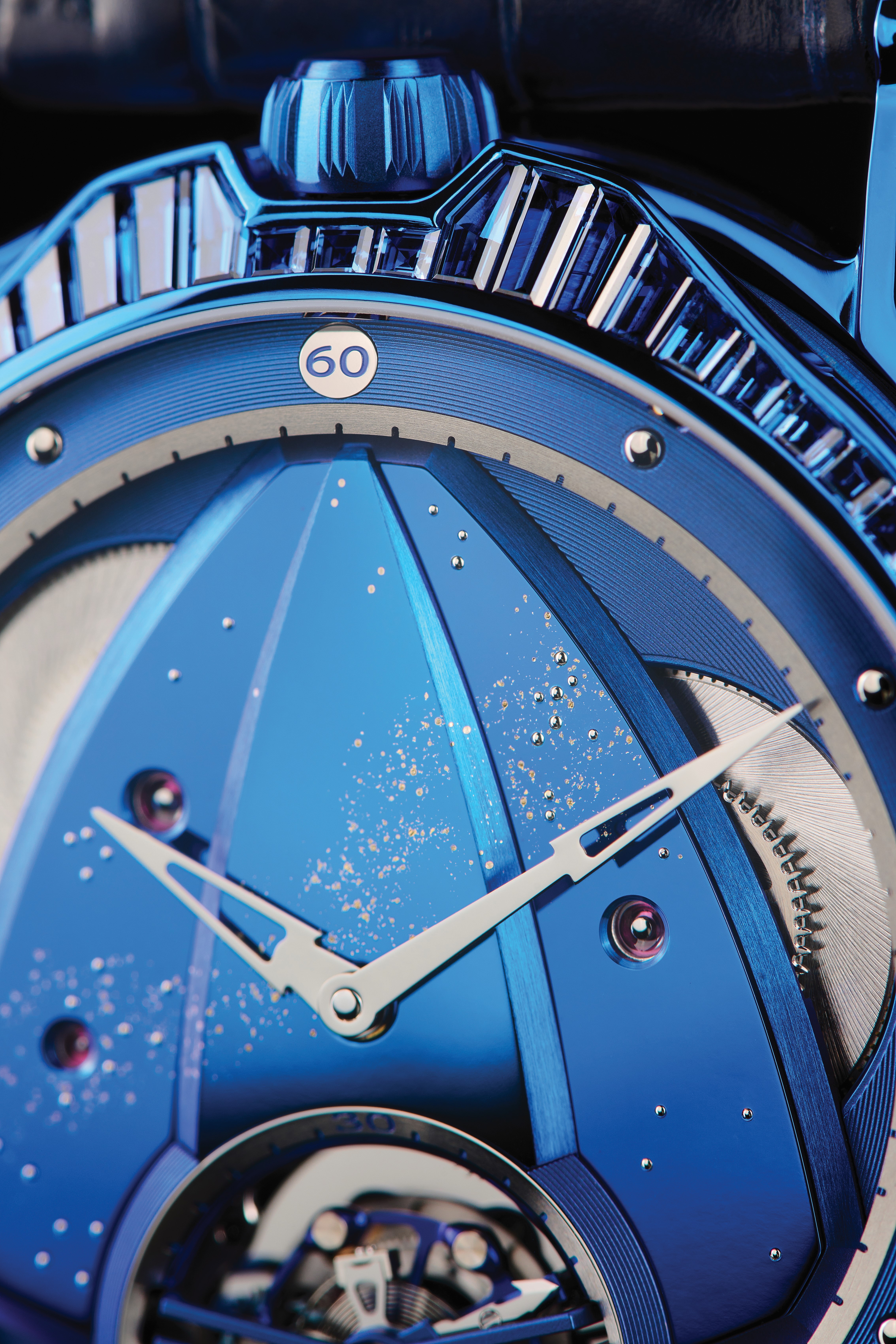
And in accordance with its name, nearly every titanium component is heat-blued, including the hour ring, bridge, 43mm case, caseback, and the blue alligator strap’s buckle and pin.
Only 10 examples will be produced, and considering the original DB28’s still sought-after status, well-heeled collectors would do well to snap one up when given the chance.
